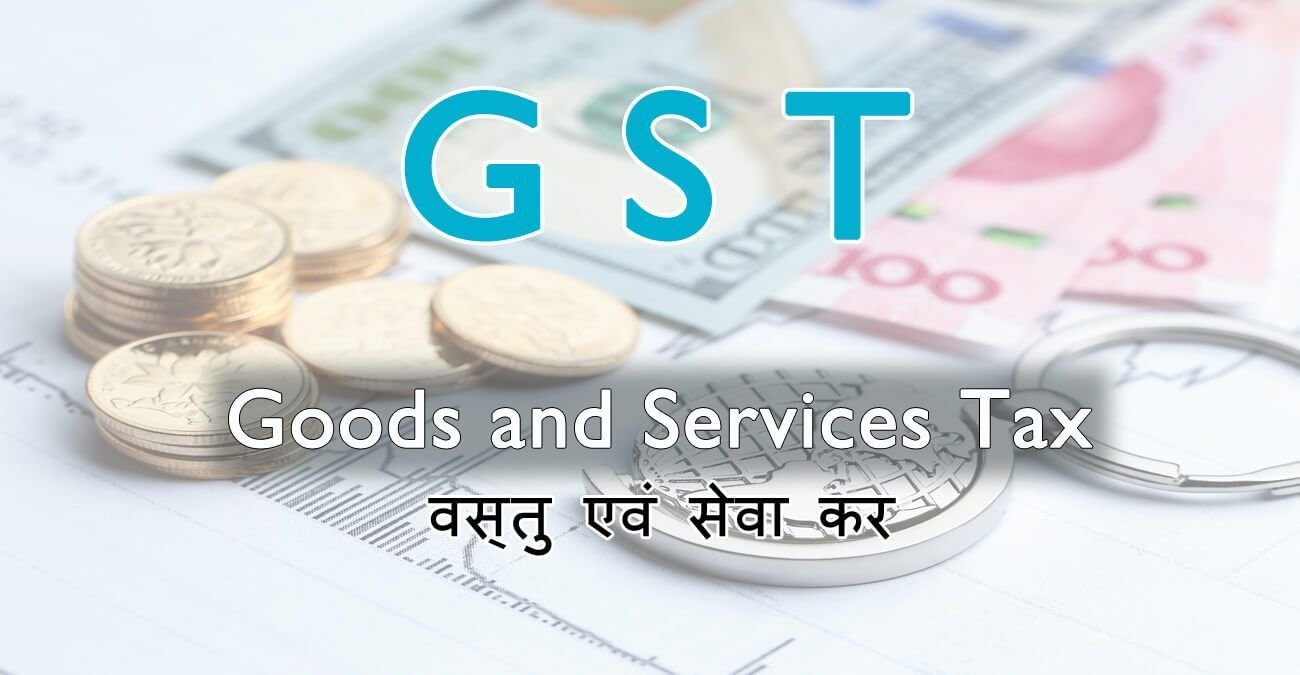What is GST? All About Goods and Services Tax, Rate Lists, Its Impact On Individuals, Business As Well As The Economy
Bharatwa Editor
. 5 min read
Goods and Services Tax (GST), first conceptualized 16 years ago, however getting into reality now; from July 1, 2017. The Narendra Modi-led government will inaugurate the new indirect tax at the stroke of midnight of June 30 in Parliament. One Hundred and Twenty-Second Amendment Bill of the Constitution of India.
In a general sense GST is a total tax levied under the name of the finance council and the finance minister. Previously the taxes were levied under the name of the state and central government. However, the government of India changed the certain aspects of tax registration for the welfare of the country and it’s people.

Goods and Services Tax- GST
Also Read:
1. GST’s Staggering Technology leads to Reduced Paperwork and Better Efficiency
2. GST Will Impact Everyone – Whether it’s Taxpayer or Non-Taxpayer
The term GST is abbreviated as the goods and service tax. The goods and service tax levied by the financial council of the government of India is acting as a relief of registering different forms of the taxes under different subdivisions.
What Is The Significance Of The Goods and Services Tax (GST) Bill and What Are Rhe Reforms?
The main reason behind this revolution is to make people’s lives better. The government of India introduced some of the aspects of taxation in terms of the financial commitments of the government of India. And introducing GST is one of the major decisions made by the finance minister of India.
- No more taxes levied in the name of the state and central government of India.
- The main tax party that will be involved in the GST system would be the financial council of the government of India.
- Citizens of India can focus on paying taxes under the instruction of the Finance minister of the country.
- The goods and services tax covers all sorts of taxes, including value-added tax, central sales tax and the rest of the commercial and noncommercial taxes.
Tax Rate Lists Under the GST
The recent announcements of tax changes in terms of Goods and Services Tax (GST) impositions, all the previous commercial and non-commercial tax rates took a complete change of shape by the orders of the government. Moreover, as per the recent notice published by the government, there are four different slabs of GST rates. And they are as follows.
- 5 percent tax rate slab
- 12 percent tax rate slab
- 18 percent tax rate slab
- 28 percent tax rate slab
5% Tax Rate Slab of GST
The 5 percent tax rates are applicable to the food and similar items such as groceries, sweets, desserts and medical expenses or drugs. Previously these all food and related household things were registered under the tax rates of 12.5 percentage. At the announcement of the GST 5% tax change in the food another related things, there is a change of opinion among peoples and their daily livelihood.
12% Tax Rate Slab of GST
Similarly, the recent changes announced in the form of Goods and Services Tax (GST) rates made applicable to the items related such as computer peripheral and all sorts of processed foods. The recent change in the tax rate belonging to the computer accessories and processed foods comes down to the 12 percent of the tax rate.
Also Read:
1. How will GST Impact Government Decision Making, Functioning, Work Culture, and Environment?
2. What is GST? All About Goods and Services Tax, Rate Lists
18% Tax Rate Slab of GST
However, the complete change of tax scenario also affected the different sectors of the household billing and services. And some of the changes would be from the transportation, household, personal care, and telecom services. Previously, these different sectors of household services charged at the rates such as:
- 15% of the transportation
- 28% of the household and personal care
- 15% of the telecom services
- 28% Tax Rate Slab of GST
All sorts of heavy-duty vehicles and luxurious household items are costed at the rates of 28 percent of tax rates. Other than these heavy metal cars and home and kitchen appliances, even the entertainment sectors are being charged at the rates of 28 percent of tax rates reducing 2% of tax rates from the original tax reforms.
After-effects Of New GST Tax Reforms On Individuals
The major sector wherein which the GST impacted or imposed its powers undisputedly would be on the main gross domestic products. The recent goods and service tax reforms change the overall structures of the finance departments. There may be no imposition of paying different regions of taxes under the state and central government of the country. However, there some major impact of GST on common individuals which stated below,
Common People With Steady Income Levels Are Experiencing A Relief After Implementation of GST
From the recent tax rate reduction from 12% to 5%. The reduction of seven percent of tax rates changed the major structure of the standard of living. Moreover, all sorts of instant foods and processed foods are out this list. Which can be disappointing for all the takeout eaters and processed food dependents.
Calling Gets Expensive After GST
Because of the major increase in the calling and mobile billing rates, people might have to think of writing a letter to one another. The mobile phone rates and calling charges met its change from 15% to the 18% tax rates. Therefore, because of this major difference common individual might have to think twice before contacting anyone.
Garments, Television and Car Buying Can Be Reasonable After GST
The announcement of the GST rates in terms of ready-made garments buying is made affordable and reasonable for all steady income individuals. Similarly, if planning to buy a car or a television, then people can buy those appliances immediately as the tax rates have been reduced to a drastic level.
GST and The Economy
Also Read:
1. GST- The best Tool to reduce Corruption, Increase Government Efficiency through Technology
2. Impact of GST on Indian Bloggers, Affiliates and Online Service Providers
The GST tax reforms delivered a vast change in the economy. Recently changed tax rates will deliver a huge result in the future term. Currently, the GST rates are reducing the inflation rates of the business and the economy. And some the major affecting matters are stated below.
- The GST change, enforcing structural changes in the company operations.
- All companies may not fully agree to provide lower tax rates to their customers.
- The GST reduced the inflation rates of the economy.
- No positive approach presented by the RBI against the GST.
- The development and growth rates of the economy will show its results gradually.
Finally, the bottom line is that all the meaning and aspects of GST provided a complete information about the coming changes in the people’s lives and in the economy. These all GST reforms and changes definitely create a wave of change in the overall growth of the country.
More Stories from
15 Pakistani Movies That Will Make you Forget Bollywood
We have compiled the ultimate list of top 15 Pakistani movies that you shouldn't miss, these left a greater social impact.
Film Mafia, Fueling the Fire and Enraging Masses
Film Mafia of Bollywood is Fictionalizing history, Rubbishing Religion, Promoting Anti-National Spirit, Mocking Hindu Gods, Award Wapsi and Intolerance drive
How did India respond to Donald Trump's 25% tariff penalty on India?
Trade tensions between the United States and India have sharply increased as a result of this recent development. Know how India responds to Donald Trump's 25% tariff penalty on India.
Geoffrey Hinton's AI Warning: The Most Dangerous Invention Ever
AI is both beneficial and dangerous, depending on how it is developed, deployed, and regulated.
Unbelievable Facts about World History that will surprise you
Human history and the natural world are filled with mysteries, marvels, and strange truths that challenge our understanding. In this article, we will explore some unbelievable facts about world history.





